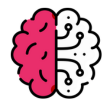Salons face constant pressure to balance smooth operations with strong client relationships. As competition grows, many owners look for ways to simplify daily tasks while still delivering a high level of service. Technology now plays a major role in helping salons manage these demands more effectively.
A salon client management system gives businesses the tools to improve efficiency, strengthen customer loyalty, and build a foundation for long-term growth. It supports everything from scheduling to payments, while also providing insights that guide smarter decisions. By adopting the right system, salons can create a more organized process that benefits both staff and clients.
Improved appointment scheduling reduces no-shows and optimizes stylist time
Salon client management systems help reduce no-shows by giving clients easier ways to book and confirm appointments. Automated reminders and online booking options make it less likely that clients forget or cancel at the last minute. This keeps schedules more consistent and predictable.
Better scheduling also helps salons use stylist time more effectively. Gaps in the calendar can be filled quickly, and overlapping appointments are less likely. As a result, stylists spend more time serving clients instead of waiting between bookings.
Tools such as free online salon software allow salons to manage appointments without extra costs. This makes it easier for smaller businesses to stay organized and avoid wasted time.
In addition, digital scheduling gives clients more flexibility. They can select times that fit their schedules without calling the salon directly. This convenience builds stronger habits of booking in advance, which supports smoother operations and steadier revenue over time.
Automated client reminders improve retention and repeat visits
Automated reminders help salons reduce missed appointments by keeping clients informed about their schedules. Texts, emails, or calls sent in advance give clients a clear prompt to confirm or reschedule. This simple step increases attendance and keeps calendars more consistent.
Clear reminders also build trust between the salon and its clients. Regular communication shows attention to detail and respect for a client’s time. As a result, clients feel more valued and are more likely to return for future services.
These reminders support long-term business growth by encouraging repeat visits. A steady flow of returning clients often leads to stronger relationships and higher retention rates. Over time, this creates a more predictable client base and steadier revenue for the salon.
In addition, automated systems reduce the need for staff to call clients manually. This saves time and allows employees to focus on service quality. Efficiency improves, while clients continue to receive consistent appointment updates.
Centralized client history enables personalized service and upselling
A salon client management system keeps all client details, such as past services, product preferences, and appointment history, in one place. This allows staff to quickly review information before each visit and prepare tailored recommendations that match the client’s style and needs.
With accurate records, staff can suggest add-on services or products that align with a client’s past choices. For example, if someone often books color treatments, the stylist may recommend a conditioning service or a specific hair care product. This approach feels natural because it connects to the client’s existing habits.
Centralized history also helps maintain consistency across visits. Different staff members can access the same information, so the client receives a familiar experience even if they see a new stylist. As a result, clients feel recognized and valued, which supports higher satisfaction and repeat business.
By combining service history with product data, salons gain more opportunities to increase sales without pressuring clients. Instead, the system guides staff toward practical suggestions that benefit both the client and the business.
Data-driven insights support strategic business decisions
Salon client management systems give owners clear data that helps guide decisions. Instead of relying on guesswork, managers can see patterns in client visits, service preferences, and spending habits. This allows them to plan with facts rather than assumptions.
For example, tracking client retention rates can highlight areas that need attention. If repeat visits drop, the system shows it quickly so the team can act before the problem grows. This helps protect long-term customer loyalty.
Inventory planning also benefits from accurate data. By reviewing product usage and sales, salons can order the right amount at the right time. This reduces waste and prevents shortages that frustrate clients.
Staff performance reports add another layer of insight. Owners can see who brings in the most bookings or who needs extra training. With this knowledge, they can make fair and informed staffing decisions.
As a result, data-driven insights turn everyday operations into measurable actions that support growth and stability over time.
Streamlined payment processing accelerates transactions and cash flow
A salon client management system helps speed up payments by connecting scheduling, services, and billing in one place. Clients can pay immediately after their appointment, which reduces wait times and creates a smoother checkout experience. This direct process also decreases the chance of manual errors.
Faster transactions support healthier cash flow. Salons receive funds more quickly, which allows them to cover expenses such as supplies, rent, and staff wages without delays. Consistent cash flow also makes it easier to plan for growth or reinvest in the business.
Digital payment options give clients more convenience. They can use cards, mobile wallets, or stored payment details, which often leads to faster checkouts and fewer missed payments. As a result, the salon gains both efficiency and customer satisfaction.
Automated records from the system also improve financial accuracy. Owners can track payments in real time and reduce time spent reconciling accounts. This clarity helps them make better financial decisions with less effort.
Conclusion
Salon client management systems give owners practical tools to organize appointments, track client history, and reduce missed visits. This structure helps staff save time and focus more on service quality.
They also support stronger client relationships by storing preferences and past services, which makes repeat visits more personalized and consistent.
In addition, the data collected allows owners to measure performance and make informed decisions about growth. As a result, salons can build long-term stability and steady client loyalty.



